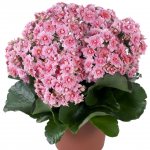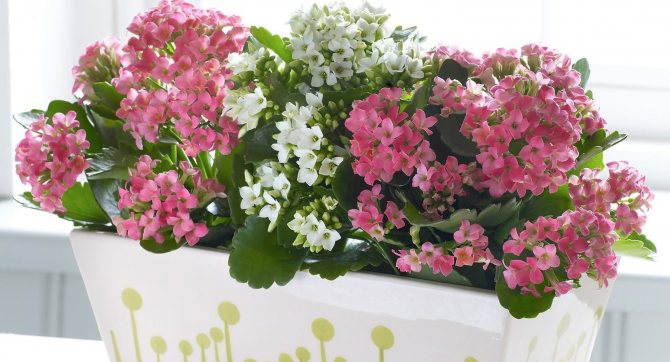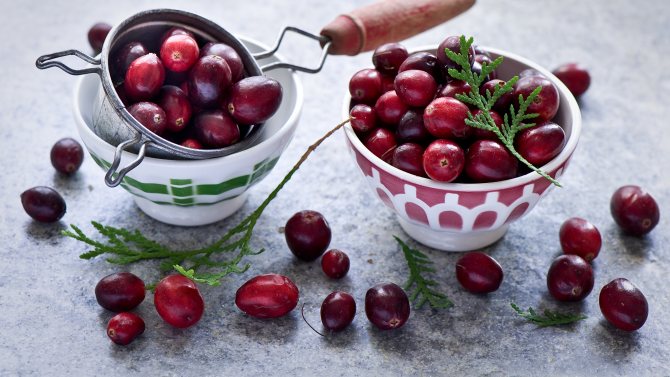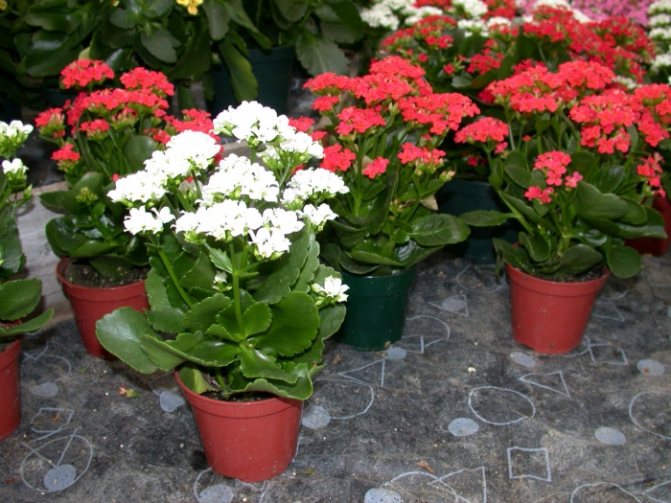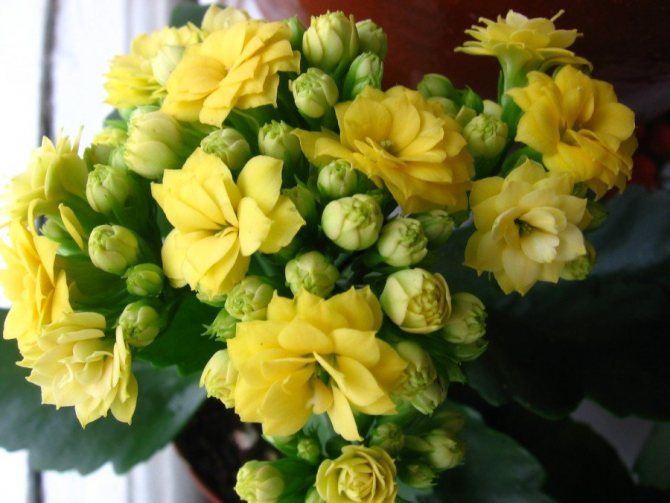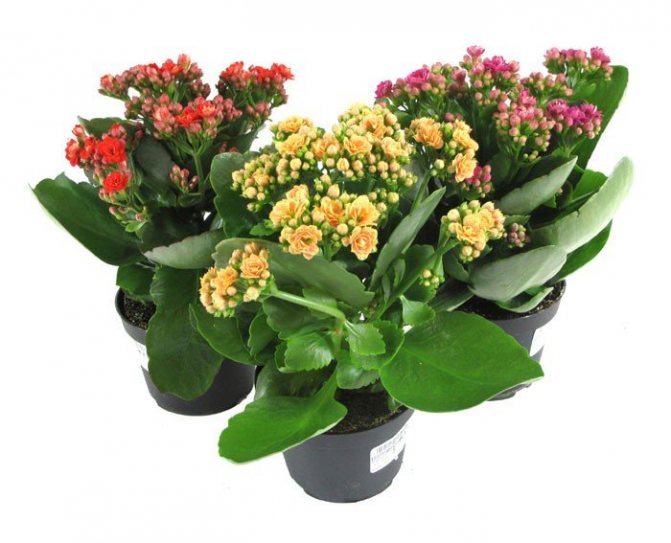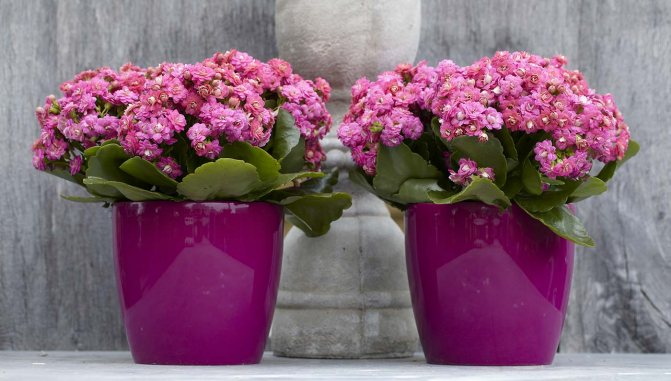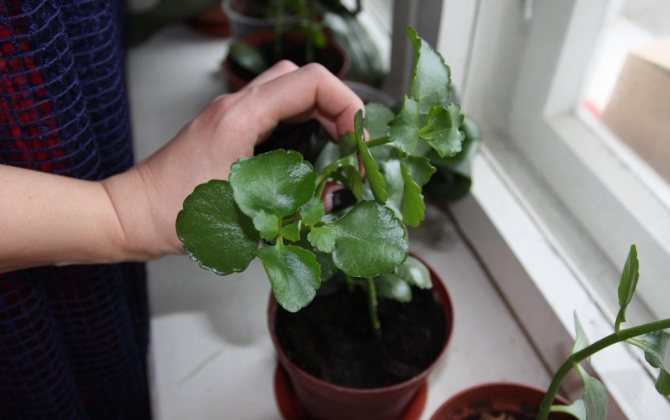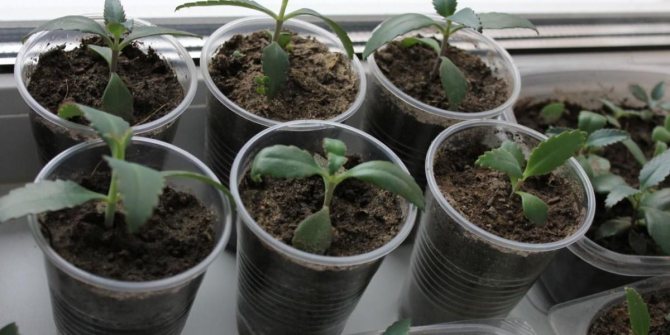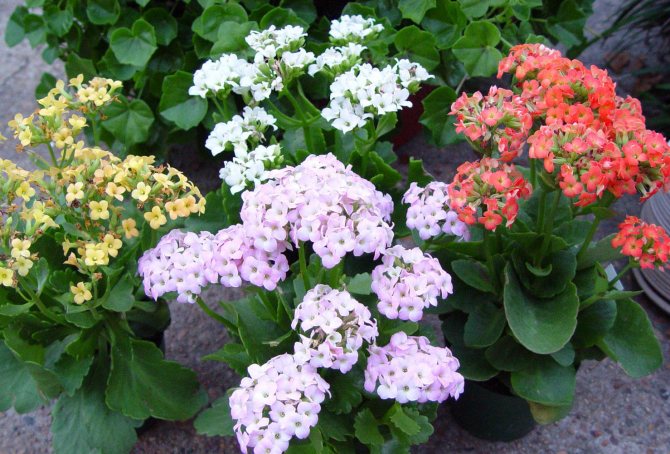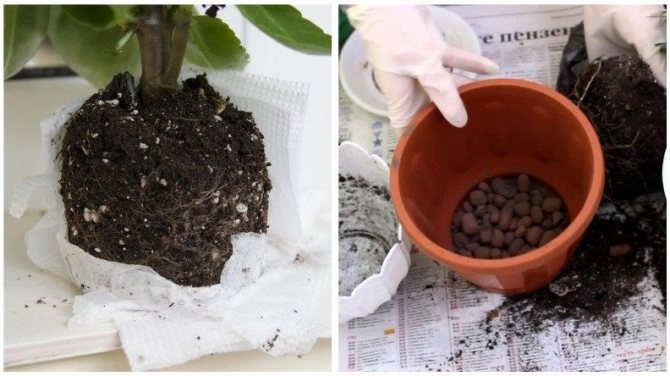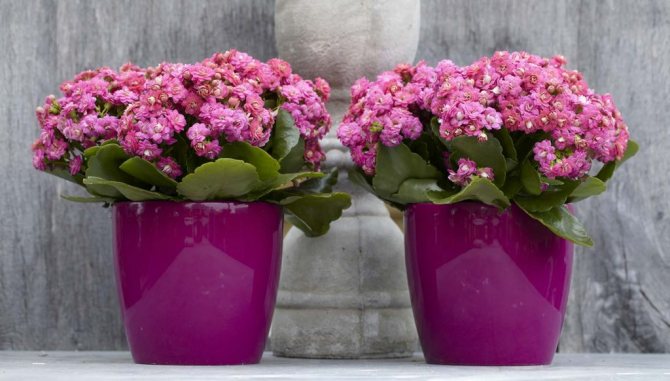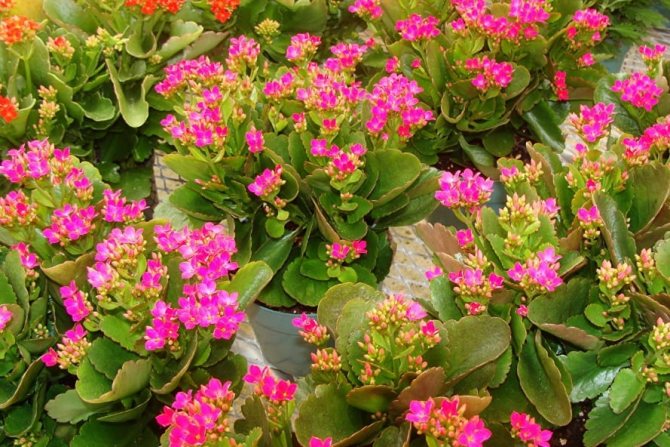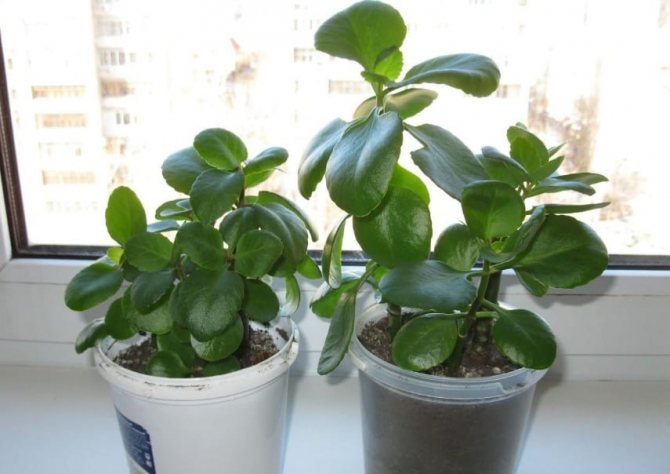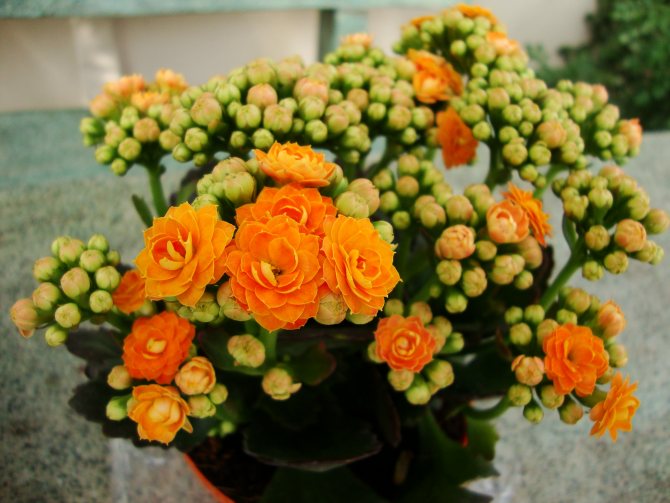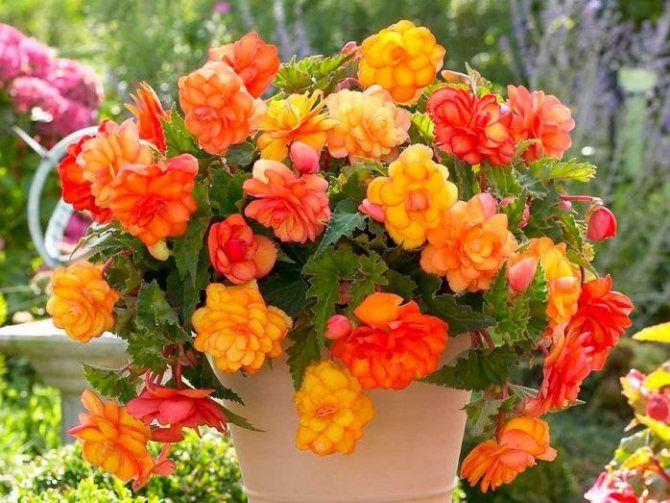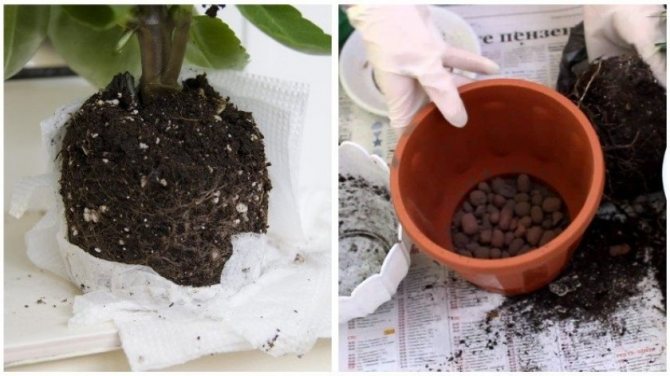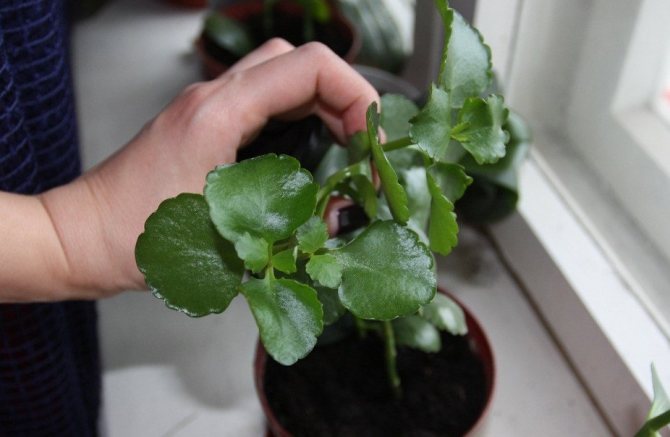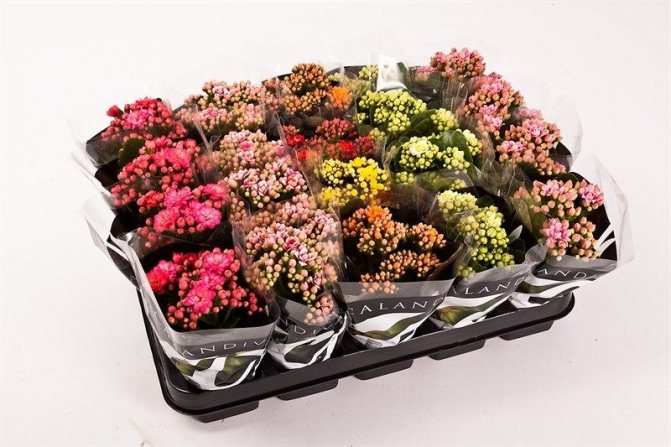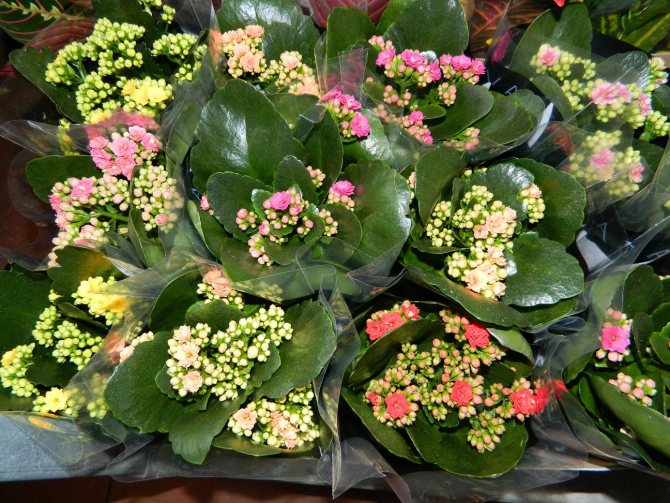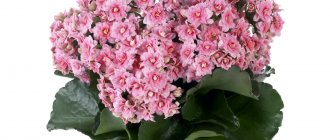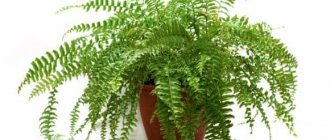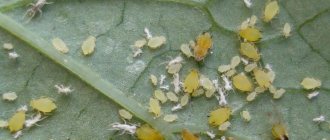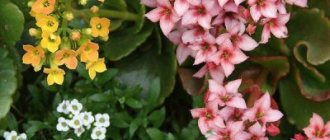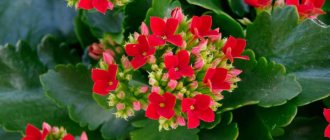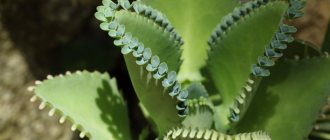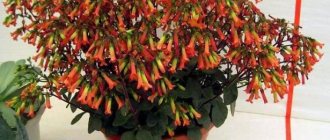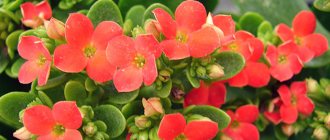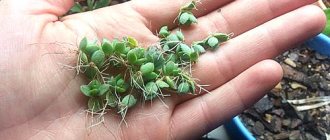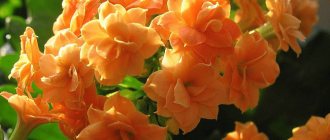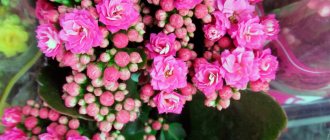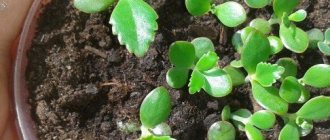Surely, you have often paid attention in stores to small pots, densely covered with small pink-like flowers. They look very impressive and enjoy a well-deserved prestige in floriculture. After all, they are not only attractive, but also unpretentious in care. Possessing miniature dimensions, they do not take up much space on the windowsill. And, at the same time, they are a bright spot among other plants due to the numerous lush and variegated inflorescences.
This is Kalanchoe Kalandiva, which is valued primarily for its attractive appearance and, to a lesser extent, for its medicinal properties.
Few people know that Kalanchoe Kalandiva is the closest relative of Kalanchoe Blossfeld. But it differs from it in more miniature size, abundance and duration of flowering.
Description of Kalanchoe
Kalanchoe (Latin name - "Kalanchoe") is a plant from the fatty family. Includes about 200 different shrubs, perennials, succulent species. The "appearance" of the Kalanchoe is diverse, from creeping green bushes to miniature bushes - bouquets, with lush umbrella-shaped inflorescences of a wide palette of shades. The natural zone of distribution of the plant is the American, Asian, Australian tropics.
The most famous Kalanchoe variety is pinnate (Latin spelling - Kalanchoe Pinnata). The second most common home flower is the Kalanchoe Degremona. It is known for its unusual appearance: along the perimeter of large serrated leaves, buds are formed, from which small leaves and roots appear on the plant. Once in the soil layer, they take root instantly.
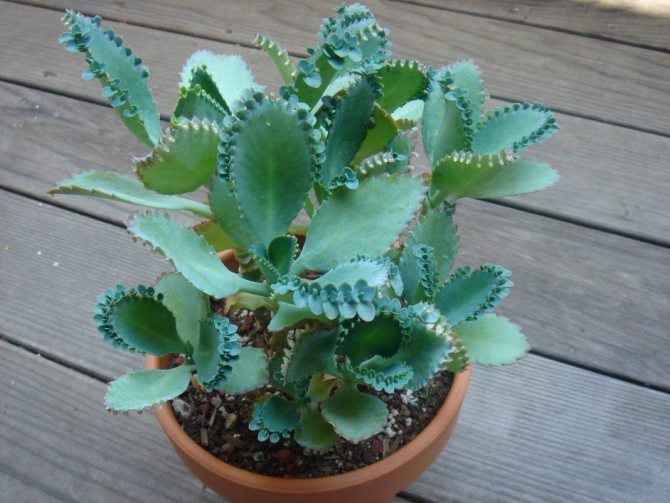
Both types of plants are medicinal. The juice of these plant species is recognized as curative by official medicine. Alcohol tinctures are produced, the composition of which is based on the Kalanchoe pinnate. The plant is known for its medicinal characteristics:
- antiseptic action;
- hemostatic agent;
- regenerating (accelerates the healing of wounds);
- immunomodulatory property (tincture is taken orally);
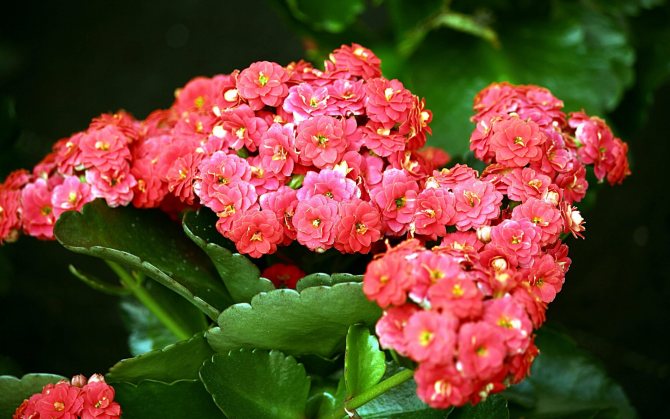

Of the ornamental varieties of indoor flowering plants, the Blossfeld Kalanchoe, whose homeland is the island of Madagascar, is the most common. The widespread Kalanchoe Kalandiva, a miniature flowering shrub, was also derived from this species. The difference between these two types is in decorative features. Kalandiv has a more compact bush size, a greater number of inflorescences and a more varied color of flowers. Both of these decorative varieties are very popular among flower growers around the world. So at flower fairs in Holland, the number of Kalanchoe exhibited prevails over other flowering plants. The history of these flowers is connected with the period of the Christmas holidays; today they are on free sale all year round.
Dates of the procedure
Young plants need surgery once a year. It is desirable that at this time the Kalanchoe be in the stage of active growth. The root system and the aboveground part grow intensively during this period, therefore, they recover faster. For this reason, the crop can be replanted in the spring. It is preferable to choose April or May.
In the fall, the procedure is only valid for new, recently purchased copies.At the same time, one should be prepared for unforeseen difficulties, problems with flowering and development, loss of decorativeness.
Kalanchoe transplant tolerates quite well, but some species react negatively if done incorrectly.
Proper care of Kalanchoe at home
Almost all indoor plant varieties are successfully grown at home. An extremely unpretentious flower is easy to plant on your window, even for an ordinary amateur who does not have special care skills.
Lighting
Kalanchoe is very light-requiring. A prerequisite for growing it is intense bright sunlight lasting 10 to 12 hours. In the light period of the year, the plant is best placed in the western or eastern part of the room. During the scorching sun, it is advisable to darken the room. The exception is the winter months. In the cold season, when there is practically no sun, it is advisable to move the Kalanchoe to the south and increase the length of the day with an additional source of light.
The Kalanchoe Blossfeld variety is able to delight its owners with a riot of color, provided that all conditions of proper care are met. There are plants that are not damaged by bright sunlight. For example, felt Kalanchoe and other types. Their lowered leaves in the shade become shallow, stretching upward. The Kalanchoe variety Kalandiva, on the contrary, prefers bright, long light for flowering.
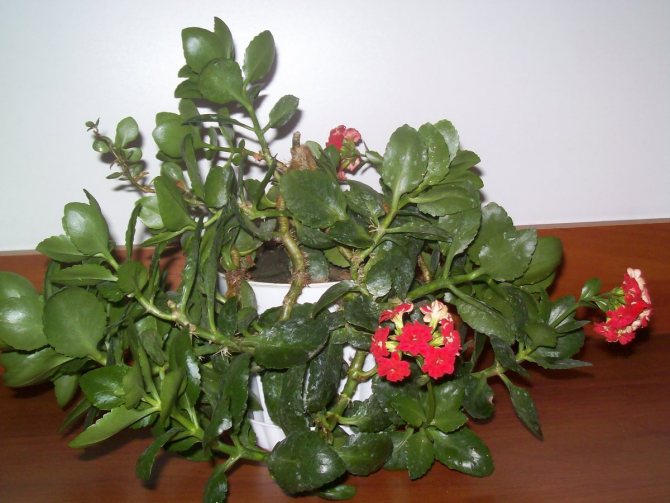

Features of the temperature regime
For the normal growth of Kalanchoe, a temperature range of +18 to +28 degrees is preferred. At the same time, in winter for a flower, it is desirable to reduce the regime to +14 C. for the natural formation of buds, but it is important to know that a long decrease in the degree can be destructive. In a warm season, it is advisable to keep the flower on an open veranda or balcony. This will provide adequate ventilation.
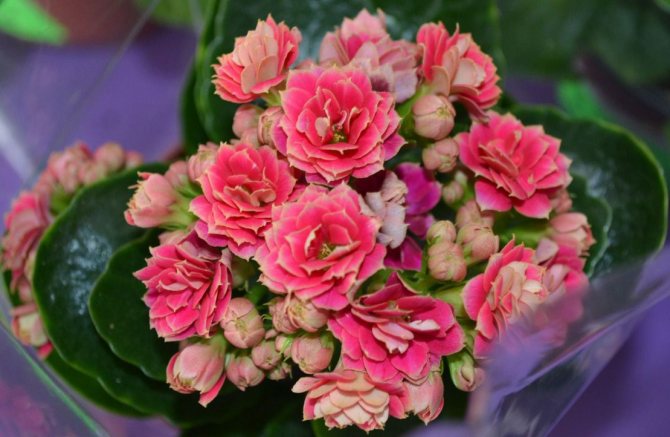

Compliance with air humidity
Kalanchoe is not afraid of dry air. It is enough just to wipe the surface of the leaves with a damp cloth while spraying, and when spraying, avoid abundant watering of the buds.
Watering mode
Kalanchoe is a natural succulent plant, for which dry soil is preferable to increased importance. When watering a plant, it is important to achieve dehumidification by one third of the upper soil layer in summer and by two thirds during cold weather. In the second case, watering should be minimized.
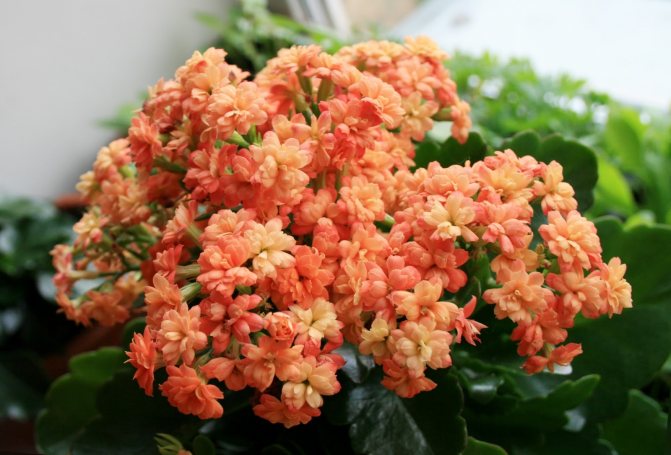

Top dressing
It is enough to feed the plant once a month with special fertilizers with a minimum inclusion of nitrogen in the dose. Excessive substance content in the liquid destroys the root system. During the flowering period, weekly feeding with minimal dosages is permissible. There is no need for additional food during the winter months.
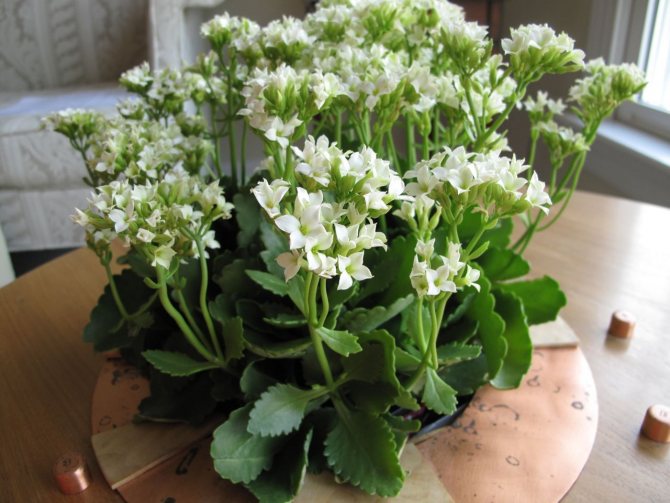

Transplant
Kalanchoe is usually planted in case the plant has grown strongly. Take a container two to three centimeters larger than the previous container. Also, the transplant is carried out if the Kalanchoe has faded and become bare. The pot can be left the same, only replace the earth. A special balanced soil designed for succulents is suitable. It is easy to make at home. Two parts of sod land are mixed, and one part of humus and sand is mixed. The addition of small birch coals is helpful. The bottom of the mold is covered with drainage to avoid waterlogging. Excess moisture is destructive not only for the root zone of the plant, but also for its aboveground part.
Pruning
With age, the Kalanchoe stretches upward, the stems are exposed. To maintain a decorative look, you should periodically pinch long shoots. Exposed stems can be cut off completely.
Planting and transplanting procedure
Transplantation of Kalanchoe Kalandiva (young plants up to 3 years old) is carried out annually, in early spring. Adults only need one procedure every 3-4 years. During flowering and "rest" he is not disturbed.
For each subsequent transplant, you need to take a pot 1–2 cm wider than the previous one. The optimal size for an adult plant is a container with a diameter of 12 to 18 cm.
Suitable soil
The substrate for cacti and succulents sold in stores is quite suitable. But experienced flower growers prefer to prepare the soil on their own. The Kalanchoe Kalandiva does not have any special requirements for it. Only neutral acidity and good aeration are important.
- universal soil and coarse river sand (4: 1);
- leaf humus, sand, peat, turf and leaf land (equally).
At the bottom of the pot, a drainage layer with a thickness of at least 1–2 cm is required.
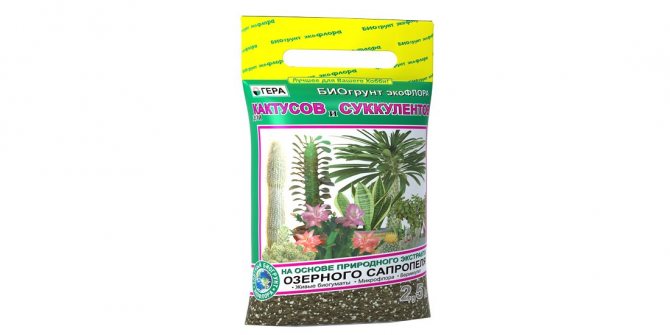

For Kalanchoe Kalandiva, a purchased substrate for cacti and succulents is perfect
Step-by-step instructions for transplanting
- Water the Kalanchoe abundantly, wait 10-15 minutes and remove the plant from the pot along with a lump of earth on the roots.
- Place it in a new pot on the drain, sprinkled with fresh soil (3–5 cm thick layer). Add earth around the edges, tightening it up a bit.
- Water the plant in moderation and remove in partial shade for 3-4 days. Then return to its original place, take care of it as usual.
- The topsoil can be mulched with pebbles or small chips. This will trap moisture and also keep mold from growing.
After buying a Kalanchoe Kalandiva, an immediate transplant is needed, unless the plant is blooming. Universal store soil is not very suitable for succulents. You should remove the flower from the pot and wash the roots to completely get rid of the "wrong" soil. And only then place it in a new substrate.
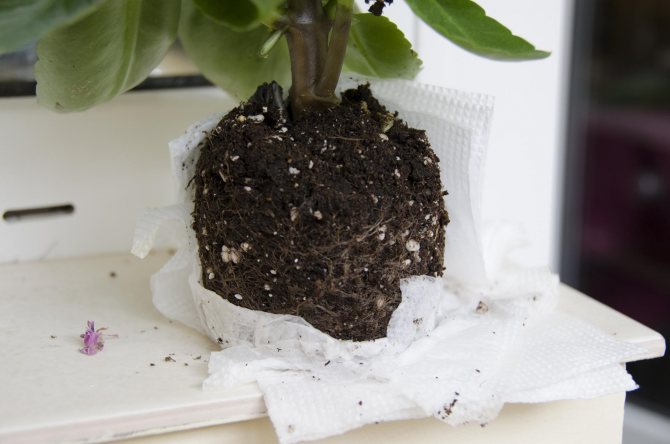

Kalanchoe Kalandiva is transplanted by the transshipment method without destroying the earthen lump
Diseases and pests: treatments
Do not confuse the problems that a plant has due to improper care with diseases. So, if the leaves of the Kalanchoe become pale or yellow-green, and the lower ones fly around altogether, this probably means that your flower suffers from a lack of light. If the leaves dry and fall off, it is necessary to organize the correct temperature regime by placing the plant in a cooler room or removing it from the battery.
The flower is often exposed and grows poorly after flowering. This is a common lack of nutrients, which can be corrected by moderate feeding or by replanting the Kalanchoe in new soil. If the flower is watered abundantly at low air temperatures, then later the plant can attack the mold, often there is the appearance of black spots on the outer surface of the leaves. A poorly ventilated room can aggravate the situation. And if abundant watering occurs at high air temperatures, then the Kalanchoe can be exposed to powdery mildew.
The most common enemies of this plant are spider mites, scale insects and mealybugs.
Spider mites are easy to recognize. A large number of small yellow dots appear on the surface of the leaves, and a thin cobweb will be noticeable on the back of the leaf. In this case, insecticide treatment is required. And as a preventive measure, an increase in air humidity in the room is suitable.
The scale insect feeds on plant juices. This very quickly affects the appearance of the flower - the leaves fly around, small ovaries stop developing. Plant growth is impaired. The parasite has a wax carapace, which is why drugs for the destruction of pests have almost no effect on it. First, you need to remove all the scale insects using alcohol treatment, and then treat the Kalanchoe with a special solution. The soil is worth updating.
Mealybug is noticeable by the white color of the leaf surface. The parasite is easily dealt with by insecticides. If the lesion is not profuse, you can wipe the infected areas with an alcohol solution.
Origin and botanical description of the plant
The genus of Kalanchoe plants belongs to the Tolstyankov family, and Kalandiva is a hybrid bred by breeders in a laboratory way, therefore it does not occur in the wild. It is a bush that rarely reaches a height of more than 30 cm.
This is a succulent plant that accumulates "in reserve" water in fleshy leaves, and then gradually consumes it.
The stems of the Kalanchoe Kalandiva flower are round, thick, densely leafy. Numerous branchy shoots produce aerial roots.
The leaves can be smooth or velvety and are dark green in color. Their shape is oval or ovoid, the edges are finely toothed.
The shape of the inflorescence is paniculate (in the form of false lush umbrellas). Flowers are double, small and numerous, on short peduncles. The peculiarity of the Kalandiva mix species is the color variety: white, red, pink and salmon-colored buds open from January to summer months. Each Kalanchoe Kalandiva mix blooms in one color, but a composition of several copies looks very impressive.
Kalandiva is bred as a highly decorative flower. The plant does not possess medicinal properties, but it is beneficial, purifying the air in the room and delighting with a bright look.
How to make Kalanchoe bloom in a home environment
Not all plant varieties are capable of blooming at home. Medicinal species (such as "Kalanchoe Degremona", "Kalanchoe pinnate") practically do not bloom in an artificial environment. It is very difficult to achieve their flowering, even with a strong desire. Decorative varieties bred specifically for interior decoration ("Kalanchoe Blossfeld", "Kalanchoe Kalandiva") bloom profusely and for a long time. General recommendations to ensure good flowering of ornamental species are as follows:
- the length of daylight hours;
- bright lighting;
- air temperature within +20 С
It is often problematic to induce flowering Kalanchoe brought from a flower shop. You may be faced with the fact that in a short time most of the plant's inflorescences wither and fall off. Don't try to immediately heal a new guest in your apartment. Just get rid of the wilted buds and place the pot in a lighted area. Additional feeding is not required. After a while, new flower stalks will appear on the bush.
If the decorative Kalanchoe does not please with its flowering for a long time, it is worth checking the ingress of light. The fact is that for the normal formation of buds, most flowering Kalanchoe varieties need the correct frequency of short and long days of light throughout the year. Therefore, keep the flower for about a month and a half in the light for no more than 10 hours and by the end of this period you will be pleased with the first inflorescences. Then the amount of light must be gradually increased. This will provide a beautiful, lush bloom. During the formation of the kidneys, the temperature should be no more than 25 and no less than + 10 C.
Common diseases
Most often, diseases attack the Kalanchoe due to errors in care or conditions unfavorable for development. The most common Kalanchoe diseases are gray rot and powdery mildew.
- Powdery mildew
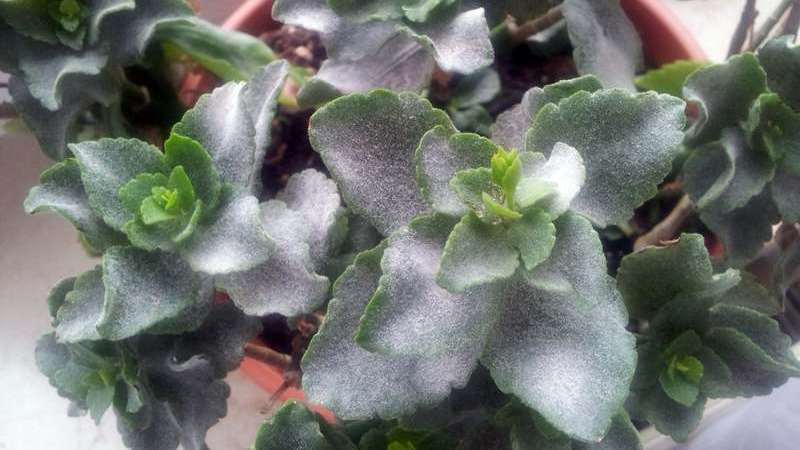

White bloom on the plant, begins to develop from excess moisture. If the plant is frequently watered and sprayed, this will happen 99% of the time. Powdery mildew is treated with special preparations. You should not fight it with laundry soap, ash and other folk methods. The disease progresses very quickly, and if it is not transplanted into dry soil, reducing the humidity in the room, and not treated with drugs, it will die. - Gray rot
It is a gray bloom on the leaves. The disease is also a consequence of high humidity, especially during the cold period. Control measures are the same as with powdery mildew - moving to dry soil, reducing watering and treatment with special anti-rot preparations.
When a plant is infected with a tick, yellow dots form on its leaves. Leaves curl and dry out. If you do not help, the whole plant will dry out over time. Aphid
This pest infects stems and leaves at the same time. Aphid infestation begins from the base of the stem and on the back of the leaves. Small green insects settle there, which are dangerous in that they interfere with the access of nutrients. Aphid larvae damage the leaf mass. Kalanchoe can die from a large number of aphids. Scratch
The defeat of this pest looks like a whitish bloom of a hard waxy consistency that appears on the stem and veins of the leaf.
- Scabbard When damaged by a scabbard, the plaque is gray, the insects are small, but they can be seen with a magnifying glass. The shield does not allow the Kalanchoe to bloom.
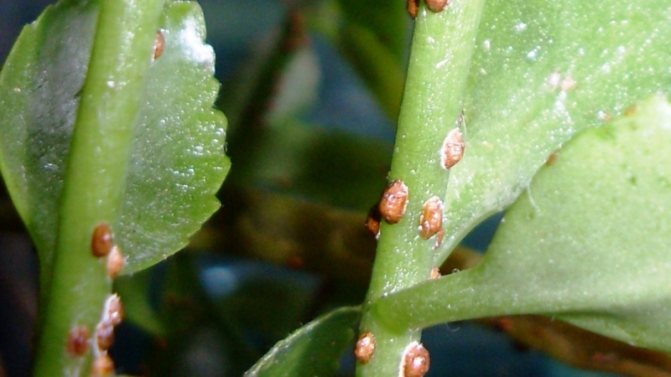

In all cases of pest damage, the plants must be cut and treated with insecticides.
Plant propagation
Kalanchoe is propagated by buds, leaves or seeds by placing the transplant in a humid environment. Small planting elements of a plant germinate more easily in sand, and large ones in water.
Rooting the cutting in wet sandy soil, it is advisable to cover it with a glass jar and spray it periodically.
When Kalanchoe propagates by seeds, sowing is carried out in early spring. They are sown into the deciduous layer of the soil, not covering it with earth, but slightly pressing it with your fingers into the surface of the soil. It is recommended to place seeds under glass and ventilate periodically. The optimum temperature should be between 16 and 20 degrees Celsius. Water should be done with warm water, avoiding drying out the soil layer.
When the first shoots appear, the glass is removed. Kalanchoe is transplanted after the appearance of the first 3-4 leaves. To improve branching in the future, after rooting, pinch its upper part. In some flower varieties, the fallen off buds should be transferred to another form with soil mixed from peat and sand.
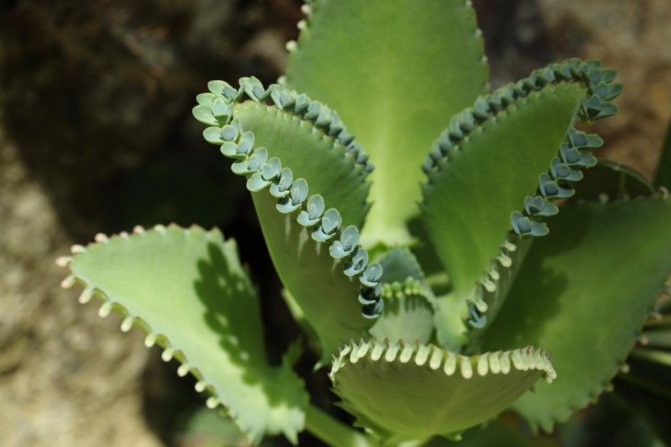

In the early days, it is advisable to place the container under the glass. Airing the sprouts should be done frequently. After rooting, they are placed in special small containers. It is better to propagate the plant from mid-April to mid-summer.
It is quite simple to care for such an unpretentious flower. Almost all varieties are not picky in everyday life. Choose the ones you like: medicinal varieties endowed with magical medicinal properties or chic decorative species that will delight you with a lush riot of color for many months.
Features of care after planting
Kalanchoe tolerates landing / transfer normally. But after it you need to provide the plant with the most comfortable conditions.
Location and conditions of detention
Kalanchoe must be protected from direct sunlight. It is best to install it on eastern or western windowsills with abundant diffused lighting.
The temperature regime in the summer season must be maintained within +20. + 28 ° С, in winter - +12. + 18 ° C. In the cold season, the Kalanchoe has a dormant period.
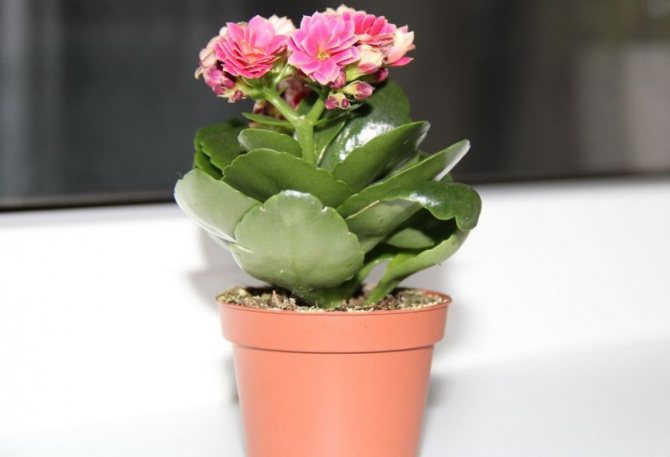

The humidity regime is also important. Kalanchoe tolerates dry air well, but it will develop better if the humidity is maintained within 50-60%. An increase in this threshold leads to the accumulation of liquid in the leaves and stems, which is fraught with decay.
As dust accumulates on the leaves, you need to wipe them with a damp swab. It is better not to shower and spray in order to avoid stagnation of liquid in the leaf sinuses.
Watering
Soil moisture should be moderate. Succulents can go without water for a long time, and overflow leads to root rot. Watering is carried out in the warm season once a week. In winter, the intensity of watering is reduced. If the air temperature fluctuates up to + 15 ° C, watering can be carried out once a month, at higher temperatures - 2 times a month.
It will be interesting for you to read about the varieties of Kalanchoe and their care:
Water is applied along the edge of the pot until it flows out of the drain holes.Then the liquid is drained. After 15–20 minutes, check the pan again for liquid. If it is, drain and wipe the pan dry. Bottom watering is not very effective, since it is impossible to determine the degree of soil moisture.
Water for irrigation should only be at room temperature, separated, without chlorine impurities. It is convenient to use a watering can with a long nose to introduce moisture into the soil.
Fertilization period
Top dressing after transplanting can be started no earlier than a month later. The interval between dressings is 20-30 days. Fertilization is last applied in September.
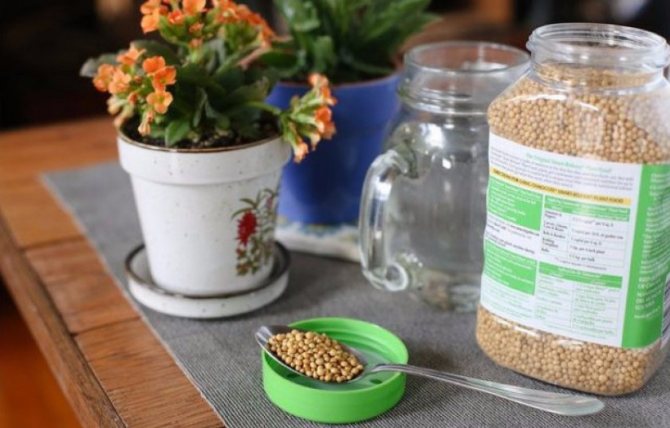

The universal fertilizer "Stimovit for cacti and succulents" has proven itself quite well. It is used for faster rooting of cuttings, when transplanting weakened plants. Throughout the growing season, the drug is introduced as a root top dressing.
It is diluted in water in a ratio of 1:40 (25 ml / 1 l). The preparation is made on the basis of vermicompost, it is completely natural, without various additives, it contains the whole complex of minerals that succulents need.
For feeding, you can also use fertilizers prepared by yourself. For example, banana skins are a good option. They are dried in an oven at a temperature of + 100 ° C, and then ground into powder. Use dry, adding 1 tsp. powder on each plant, embedding in the soil.
You can also use compost in combination with wood ash. For 100 g of compost add 1 tbsp. l. ash. All this is mixed well. For one plant, spend 1 tbsp. l. composition.
All 3 described options can be applied in turn, with an interval of 20 days.
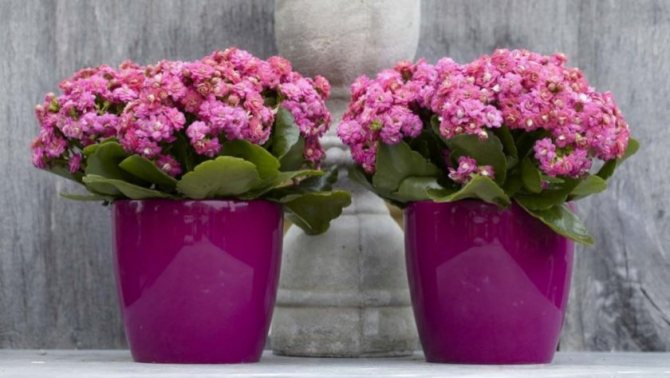

How to care for
There is nothing complicated in caring for a Kalanchoe in a pot after purchase. But you need to know the basic rules:
- Water should only be separated water at room temperature.
- Watering should be regular, as the soil dries up. Touch the soil in the pot with your hand and if they are still wet at a depth of a couple of centimeters, postpone the procedure for a few days.
- Make sure there was no water in the sump after watering.
- Water so that water did not enter the leaf outlet.
- No need to spray the leaves, and it is recommended to wipe the dust off with a damp sponge.
- There is no need to feed the Kalanchoe from the store... During cultivation in a greenhouse, the potted substrate is abundantly saturated with various nutrients and growth stimulants. Additional fertilization can burn the roots.
It will be interesting for you to know: Marigolds: planting code and how to dive correctly step by step with a photo

